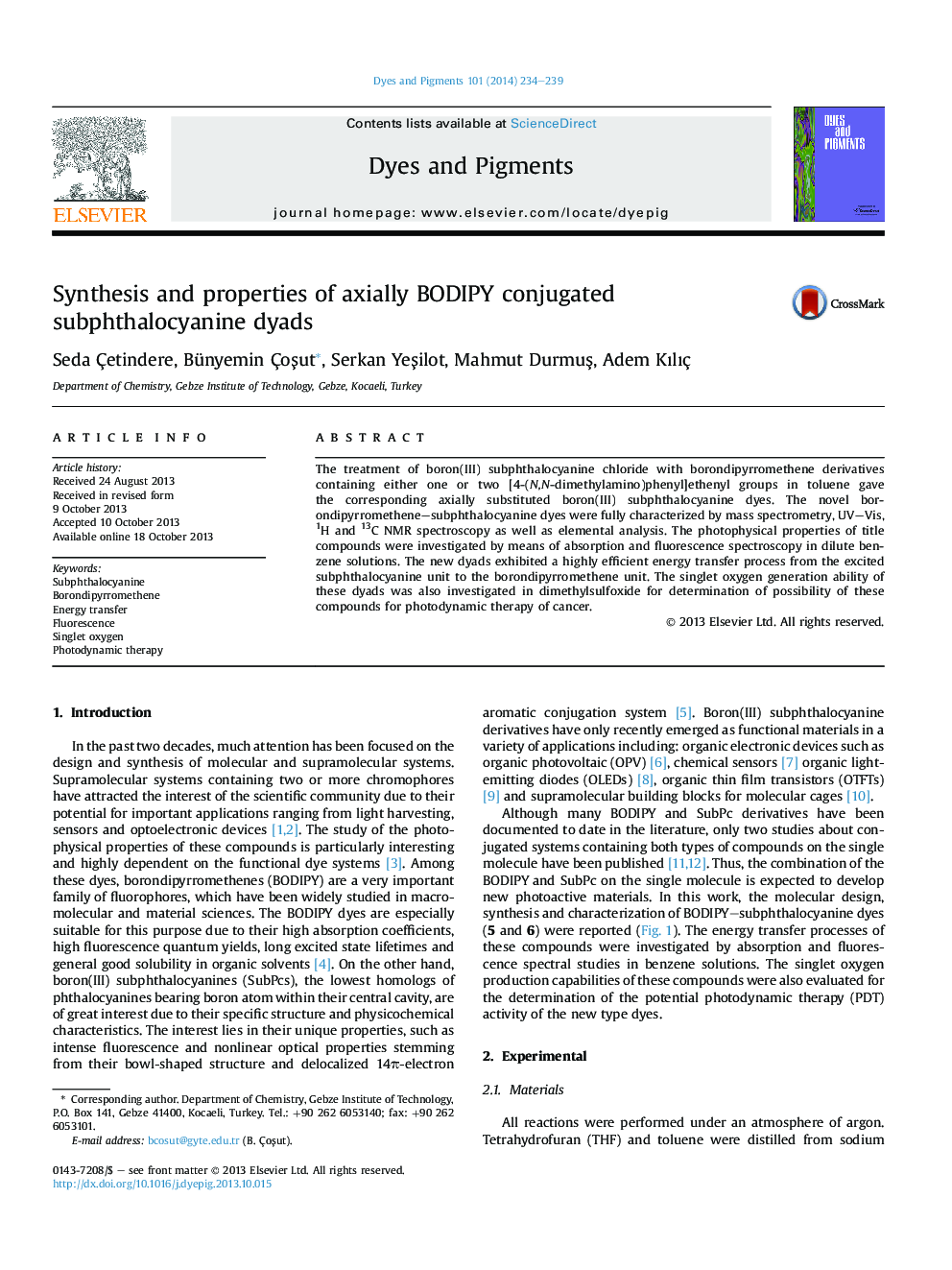| Article ID | Journal | Published Year | Pages | File Type |
|---|---|---|---|---|
| 176118 | Dyes and Pigments | 2014 | 6 Pages |
•Synthesis of axially BODIPY conjugated subphthalocyanine dyads was achieved.•Dyads exhibit a highly efficient energy transfer process, from the excited subphthalocyanine unit to the BODIPY unit.•The energy transfer increased the singlet oxygen production of the dyes which may be useful for PDT applications.
The treatment of boron(III) subphthalocyanine chloride with borondipyrromethene derivatives containing either one or two [4-(N,N-dimethylamino)phenyl]ethenyl groups in toluene gave the corresponding axially substituted boron(III) subphthalocyanine dyes. The novel borondipyrromethene–subphthalocyanine dyes were fully characterized by mass spectrometry, UV–Vis, 1H and 13C NMR spectroscopy as well as elemental analysis. The photophysical properties of title compounds were investigated by means of absorption and fluorescence spectroscopy in dilute benzene solutions. The new dyads exhibited a highly efficient energy transfer process from the excited subphthalocyanine unit to the borondipyrromethene unit. The singlet oxygen generation ability of these dyads was also investigated in dimethylsulfoxide for determination of possibility of these compounds for photodynamic therapy of cancer.
Graphical abstractFigure optionsDownload full-size imageDownload as PowerPoint slide
